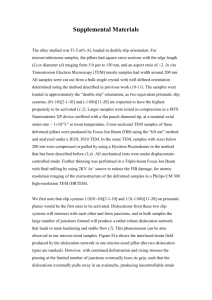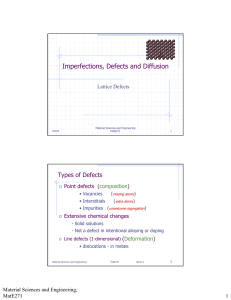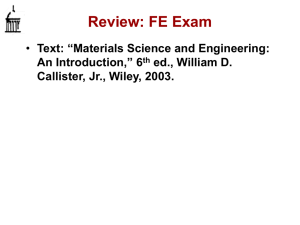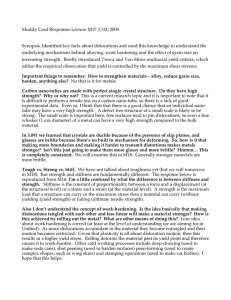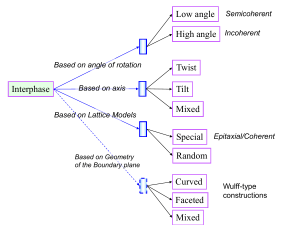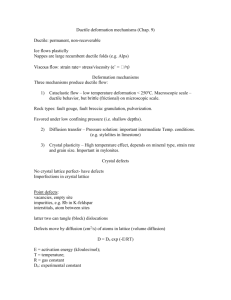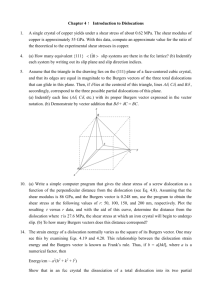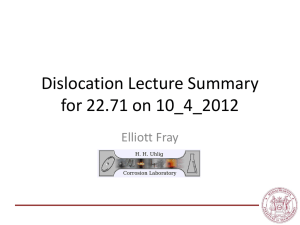Partial Dislocations
advertisement
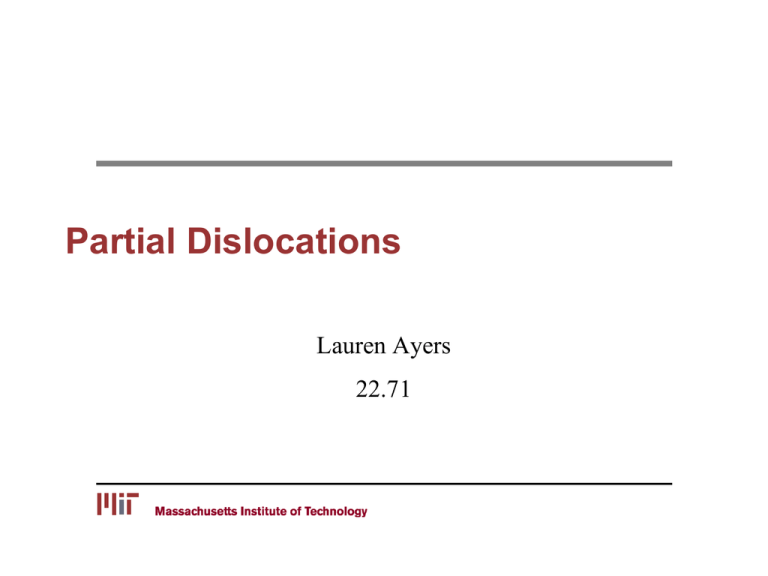
Partial Dislocations
Lauren Ayers
22.71
Outline
• Partial Dislocations
– Why Partials?
– Stacking Faults
• Lomer-Cottrel Lock
• Force on a Dislocation
• Line Tension Model
• Dislocation Density
Partial Dislocations
Single unit
dislocation can break
down into two
Shockley partials
b1
Partial Dislocations
Single unit
dislocation can break
down into two
Shockley partials
b3
b2
Why Partials?
• Frank’s Rule:
|b1|2>|b2|2+|b3|2
• Energy of a dislocation is proportional to |b|2
• Partial dislocations decrease strain energy of the lattice
Stacking Faults
• Movement of partial dislocations generate discontinuity in
stacking planes, ex: ABCAXCABC
• Two separated partials have smaller energy than a full dislocation
• Reduction in elastic energy proportional to:
• Equilibrium splitting distance
What does this mean?
• Wide vs. narrow ribbon affects cross slip
– Cu, s = 2nm: high constriction energy barrier
– Al, s= 4 A: cross slip occurs more easily
Lomer-Cottrel Lock (LC)
• 2 Dislocations on primary slip planes combine
• Formed by:
• Slip by bLC creates a high energy stacking fault
• No {111} plane which the LC can move as an edge dislocation
• “Lock”: Once the state is formed, hard to leave
• Acts as a barrier against other dislocations
Force on a Dislocation
• Climb: “Non-conservative”
• Glide: “Conservative”
Line Tension Model
• Assume:
– Line tension η (total elastic energy per length) independent of
line direction ξ
– Dislocations do not interact with each other elastically
• Local model
• From dF, derive critical external stress:
Dislocation Density
• Total length of all dislocations in a unit volume of
material
• 1/m2 or m/m3
Thanks!


